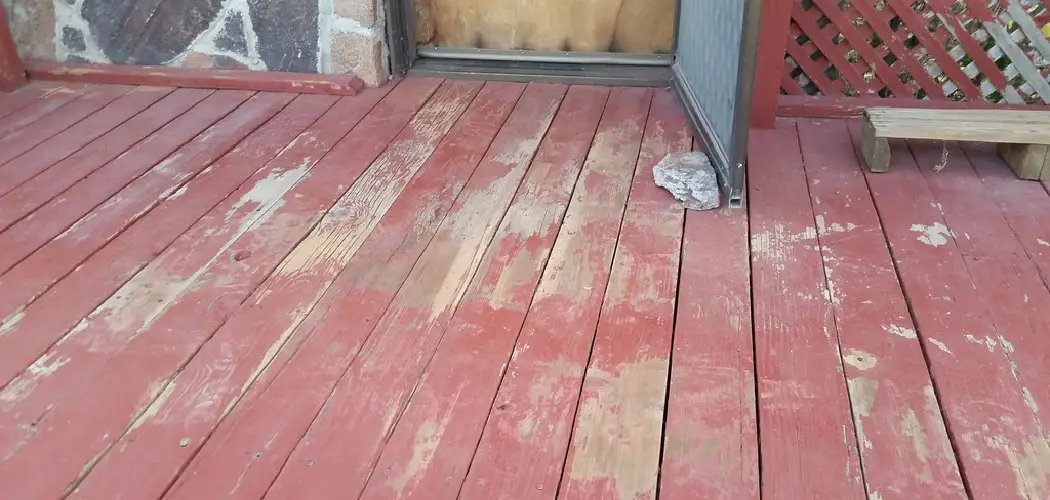Do you have a deck that is starting to chip and peel in the worst possible places? Are you worried about how much it will cost to replace or resurface your beloved outdoor space? Fear not! With a little bit of maintenance and preparation, you can prevent deck paint from peeling and ensure your wooden structure lasts for years to come.
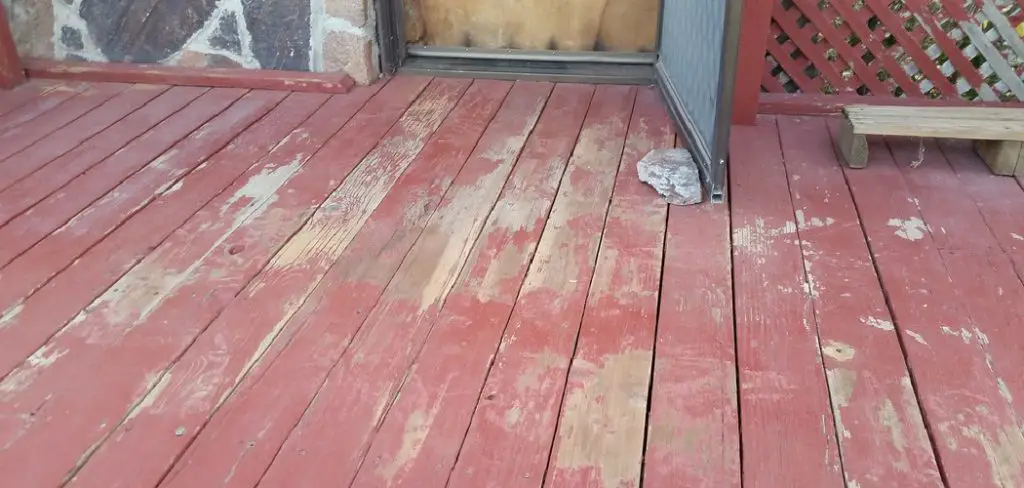
In this blog post on how to stop deck paint from peeling, we’ll discuss why paint peels off of decks, what necessary steps must be taken before painting, and provide tips on choosing the right type of paint so that your deck will remain fresh-looking no matter what Mother Nature throws at it. Keep reading to discover everything there is to know about keeping your old wooden structure looking new without breaking the bank.
Needed Materials and Tools
Given below is a list of necessary materials and tools that you will need in order to complete the task:
Power Washer
This is used to thoroughly clean your deck before applying paint, ensuring that dirt and debris will not interfere with the adhesion of the paint.
Mild Detergent
In addition to a power washer, mild detergent is also needed to wash away any dirt and debris that may have accumulated on the deck.
Wood Primer
Primer, particularly wood primer, helps ensure that the paint adheres to the deck better than it would without a base layer.
Exterior Paint
The most important material needed for this project is exterior paint, as it is specifically designed to fight off the elements and remain on your deck for years.
11 Step-by-step Guide on How to Stop Deck Paint From Peeling
Step 1: Prepare the Dack
The first step in preventing deck paint from peeling is to prepare the wood for painting. Use a power washer with a mild detergent to clean the surface of dirt and debris, then use sandpaper or an electric sander to smooth out any splinters or rough patches. If you have any areas of rot or decay, replace the boards before continuing. This is also a good time to inspect the deck for any loose nails that may need to be hammered in.
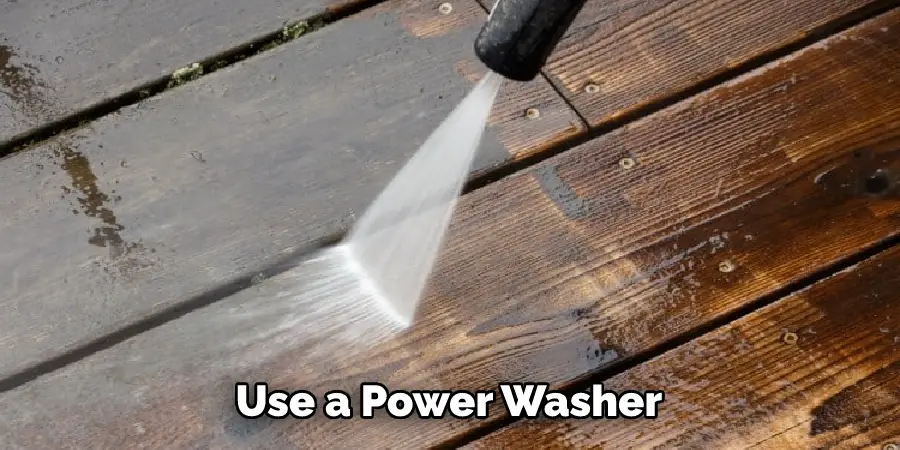
Step 2: Apply Primer
Once you have prepared the deck, apply a coat of wood primer. This will help ensure that the paint adheres to the surface better than it would without a base layer. If you are using a stain, use a sealer instead of a primer. Allow the primer to dry completely before continuing. This is also a good time to inspect the deck for any loose nails that may need to be hammered in.
Step 3: Choose Exterior Paint
Once the primer has been applied and dried, choose exterior paint for your deck. It is best to go for a paint that is specifically designed for outdoor applications as this will provide added protection against the elements. It is also important to choose a paint with UV protection to prevent fading from the sun.
Step 4: Apply Paint
Using either a roller or sprayer, apply two coats of exterior paint to your deck. Allow each coat to dry completely before applying the second one. If you are painting in sections, make sure to overlap the lines of each coat slightly so that there are no visible gaps. But remember to never paint in direct sunlight and always check the weather forecast before you begin.
Step 5: Clean Up
Once you are done painting, clean up any messes with soap and water. Be sure to dispose of any old paint cans or rags properly as well. Otherwise, they can be dangerous to both people and the environment. It is also important to store any leftover paint in a cool, dry place away from direct sunlight. If possible, label the can clearly and store it in an upright position.
Step 6: Reapply the Paint
From time to time, it is necessary to reapply a coat of paint in order to keep your deck looking its best. To do this, repeat steps 2-5 and ensure that you are using the same type of paint used originally. This will help to ensure that the colors remain consistent and that the paint adheres to the surface properly. But remember to never paint in direct sunlight and always check the weather forecast before you begin.
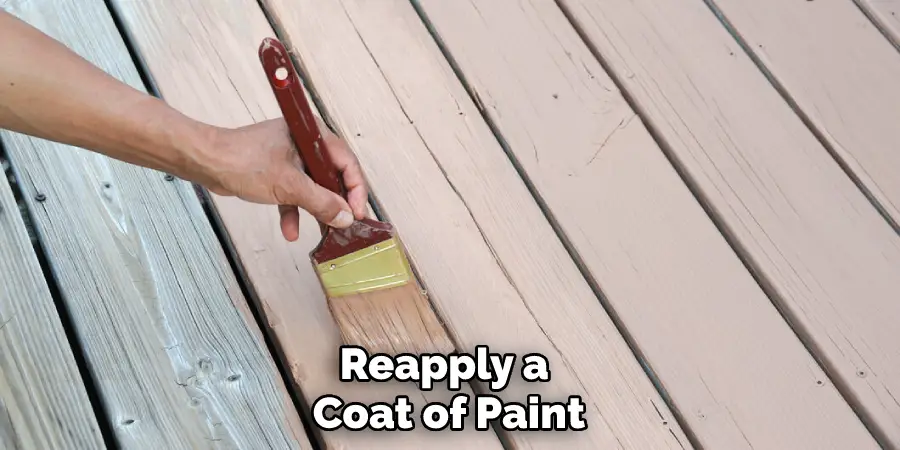
Step 7: Protect from Moisture
It is important to protect the painted surface from moisture where possible. Consider installing an awning or cover for areas exposed to direct sunlight or rainstorms. This will help keep the paint from fading and peeling prematurely. It is also a good idea to keep the deck clean and free of any debris that may trap moisture.
Step 8: Repair Any Damage Quickly
If you notice any cracks, chips, or other signs of damage in the paint job, it is important to address them as soon as possible. Use a putty knife and patch kit to fill in any holes or chips in the paint before applying another coat for the best results. It is also important to keep an eye out for areas that may have water damage or rot as this can contribute to paint peeling.
Step 9: Monitor Your Deck Regularly
Check your deck regularly for signs of wear and tear or fading. This will allow you to spot any problems early on and take steps to fix them before they become major issues. If necessary, apply another coat of paint to keep your deck looking its best. Otherwise, enjoy your deck and the beautiful views!
Step 10: Take Care when Removing Dirt or Debris
When cleaning off dirt or debris from the surface of your deck, be sure to use a soft brush and proceed gently so that you don’t accidentally remove pieces of paint with it. But if you do happen to remove pieces of paint, be sure to repair them as soon as possible with the steps mentioned in Step 8. It is also important to avoid using any harsh chemicals or abrasive cleaning agents that could damage the paint.
Step 11: Use the Right Paint for Your Deck
Make sure that you are using the right type of paint for your deck material. Different woods require different types of paints and primers, so discuss with a professional if necessary to make sure you have the right supplies. Always read the directions and use the recommended amount of paint to ensure that you are getting the best results
Following these steps on how to stop deck paint from peeling will help ensure that your deck is properly painted and protected from peeling or fading over time. With regular maintenance and care, you can keep your old wooden structure looking new without breaking the bank.
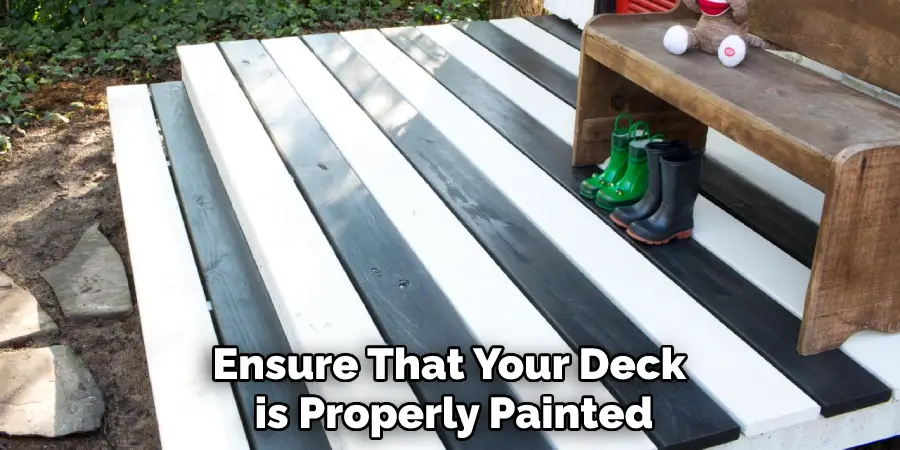
Do You Need to Use Professionals?
Although you can certainly follow these steps to paint your deck on your own, there may be times you need the assistance of a professional. A professional painter will be able to provide advice and insight that you won’t get from DIY instructions. They can also help make sure that the job is done right with high-quality materials so that your deck is well-protected for years to come. So if you’re not sure how to go about painting your deck or want to ensure the best possible results, consider enlisting the help of a professional painter.
Even though it might require some time and effort up front, properly preparing your deck for painting and taking the necessary steps to prevent peeling paint afterward will save you time, money, and hassle in the long run. Taking the time to do it right will ensure that your deck looks great for years to come. Good luck!
Frequently Asked Questions
Q: What is the Best Type of Paint to Use on a Deck?
A: The best type of paint to use on a deck depends on the material of the deck. Different materials may require different types of paints and primers, so it’s best to consult a professional if you’re unsure.
Q: How Many Coats of Paint Should I Use?
A: Generally speaking, it is recommended that you use two coats of exterior paint for outdoor applications. This will provide added protection against the elements and ensure a long-lasting paint job.
Q: What Is The Best Way To Protect My Deck Against Moisture?
A: Consider installing an awning or cover in areas where your deck might be exposed to direct sunlight or rainstorms. This will help keep the paint from fading and peeling prematurely. Additionally, regularly cleaning your deck and regularly checking for signs of wear or damage will help keep it looking new.
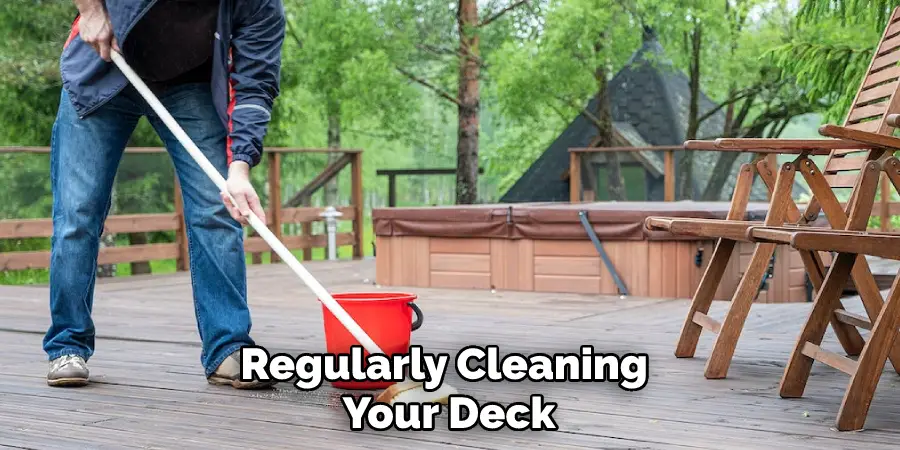
Conclusion
Regardless of which option works best for your needs, the most important factor for achieving a successful deck paint job is preparation and maintenance. Taking the time to sand down, prime, and clean the surface thoroughly can help ensure that your paint adheres. Regularly checking for signs of wear and tear and reapplying sealant when necessary will also help extend the lifespan of your paint job.
Ultimately, being diligent with maintenance is key in ensuring that your deck looks fantastic and remains in good condition all year long! Thanks for giving us an opportunity to educate you on preventing peeling deck paint, we hope you found this article on how to stop deck paint from peeling helpful.
If you have any questions or concerns regarding this topic, please do not hesitate to contact us so that we can provide professional advice on how to keep your deck looking great.

